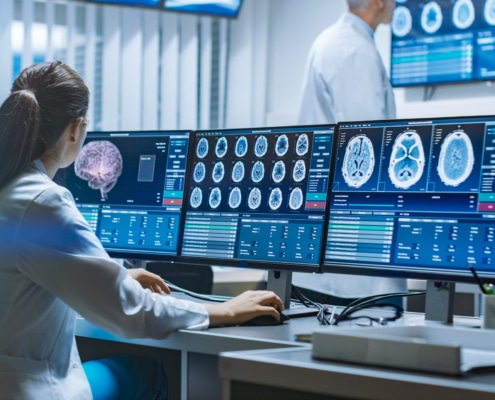How Tele-Stroke Services Can Transform Your Care Environment
 October 16, 2025
October 16, 2025
Stroke is the fifth leading cause of death in the U.S., with over 120,000 deaths each year. When someone has a stroke, they lose 1.9 million neurons, approximately three weeks of memory, in one minute. Every second counts, so the demand for rapid intervention and treatment is critical.
Unfortunately, for rural or underserved areas, timely, appropriate stroke care may not be a reality. This delay can mean the difference between walking out of the hospital or living with permanent impairment. Enter tele-stroke, a technology-driven solution that’s changing how we respond to one of the most time-sensitive medical emergencies.
What is Tele-Stroke?
Tele-stroke services are composed of trained specialists available 24/7 who support with urgent stroke calls, acute and chronic neurological conditions, follow-ups, clinical documentation and treatment planning. They work directly with on-site physicians and nurses to improve patient outcomes.
These efforts accelerate clinical decisions without overburdening an on-site hospital team. Protocols are tailored to a team’s needs and aligned with SEP-1 and CMS standards, simultaneously helping hospitals meet regulatory benchmarks and improve Leapfrog scores and audit readiness.
How is this possible? Fast and reliable tech stacks enable real-time video consultations with tele-neurologists who can seamlessly integrate into your existing communication systems with minimal interruptions.
The First Steps to Adopting Tele-Stroke in Your Hospital
Your team decided to adopt the service, but now what? You can expect the following steps to set you up for success:
- Consultation
Your service provider will evaluate your hospital setting to create a custom tele-stroke care package. This will ensure you fill your most vulnerable gaps and maximize team efforts.
- Going Live
The moment you’ve been waiting for. With easy-to-use platforms that sync right with your hospital’s system, the transition can start at once, allowing you to immediately begin providing for in-need patients with the help of your off-site tele-stroke experts.
- Ongoing Support
With consistent support, it won’t take long to notice all the positive differences a tele-stroke service makes across any department in your facility.
- Evaluating Outcomes
Tracking and reporting key metrics early on is necessary to understand areas of strengths and opportunities. With this data, building strategies and revisiting protocols will feel natural over time.
Tele-Stroke Advantages
Research has found that hospitals utilizing tele-stroke services reported lower 30-day mortality rates compared to hospitals without tele-stroke services. Patients have also reported higher levels of satisfaction and quality of care when compared to non-tele-stroke patients.
Other tele-stroke benefits include:
- Faster time-to-treatment
Remote neurologists can usually assess symptoms and conditions faster than an on-site specialist. It’s not an exaggeration to say every second counts, so immediate access to support is a big differentiator in the successful provision of care.
- Reduced on-call burden
Maintaining 24/7 specialist coverage isn’t easy, especially in rural clinics. A tele-stroke model can relieve a staff member from being on-call; this supports better work-life balance and reduces burnout.
- Timely stroke intervention
The ability of remote specialists to swiftly differentiate strokes, suggest treatment and guide next steps brings clarity to all cases and improves the chances of preferred patient outcomes.
- Specialist access without transfers
Through virtual consultations, hospitals can avoid unnecessary transfers, which saves time, reduces cost and minimizes disruptions.
Integration Across Hospital Departments
Integrating a tele-stroke service into your hospital requires coordination across several departments. A few examples of what this could look like include:
- Emergency medical response teams can notify emergency departments about a stroke patient to begin their tele-stroke protocols before arrival.
- Radiologic technologists play a key role in capturing and sharing CT scans to remote specialists for review and diagnostic planning.
- Nurses lead patient monitoring and communication with stroke specialists to plan treatment and finalize other time-sensitive decisions.
- IT ensures secure connectivity and compliance across tech stacks.
- Administration tracks metrics and supports quality improvement
Early Considerations
There are a few items hospitals should weigh in on to ensure a smooth implementation of tele-stroke services for long-term sustainability.
- Educate your team on stroke protocols through webinars, refreshers or mock drills.
- Address initial resistance to change and remain transparent.
- Educate patients and families on what tele-stroke entails and why it’s used.
- Ensure HIPAA compliance across all communication.
- Plan for back-up systems and plans in case of technical failures
Other factors include budgeting, setting staff expectations and tracking metrics.
Act Now
Tele-stroke services are constantly evolving and stand out as a gamechanger for hospitals across the country that are battling with specialist shortages. If you’re ready to strengthen your stroke response, take the next step and contact Intercept Telehealth today.



